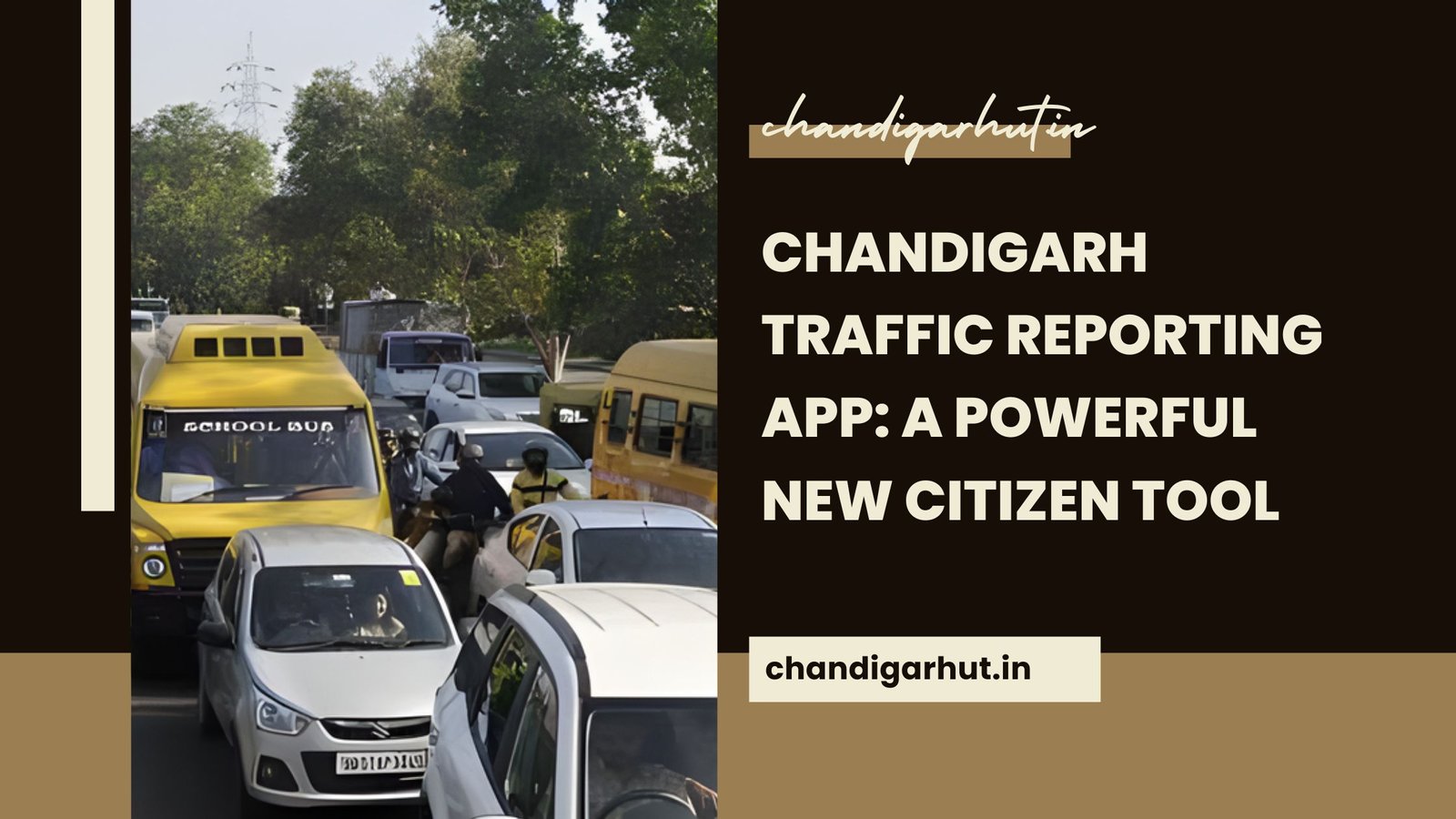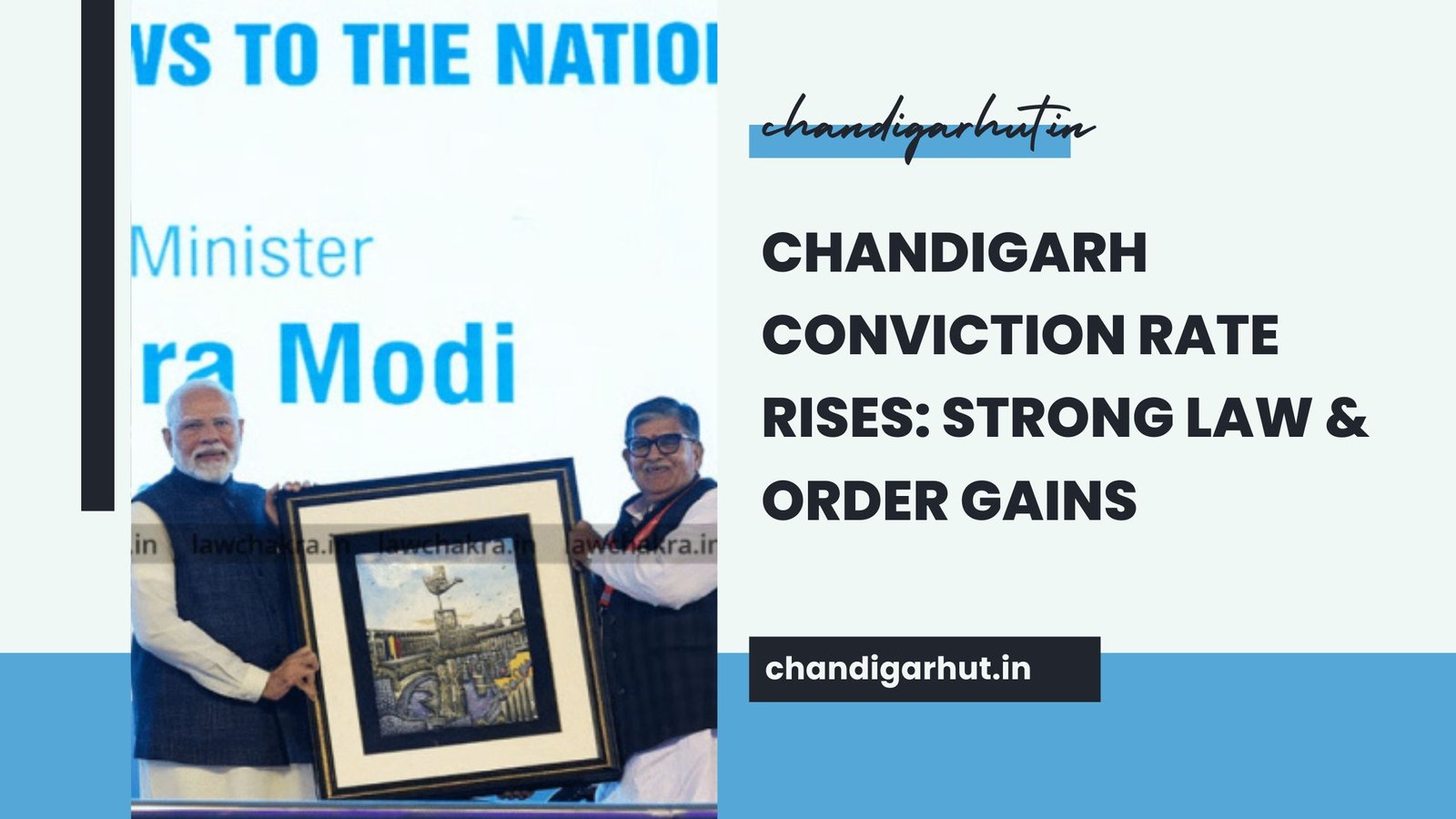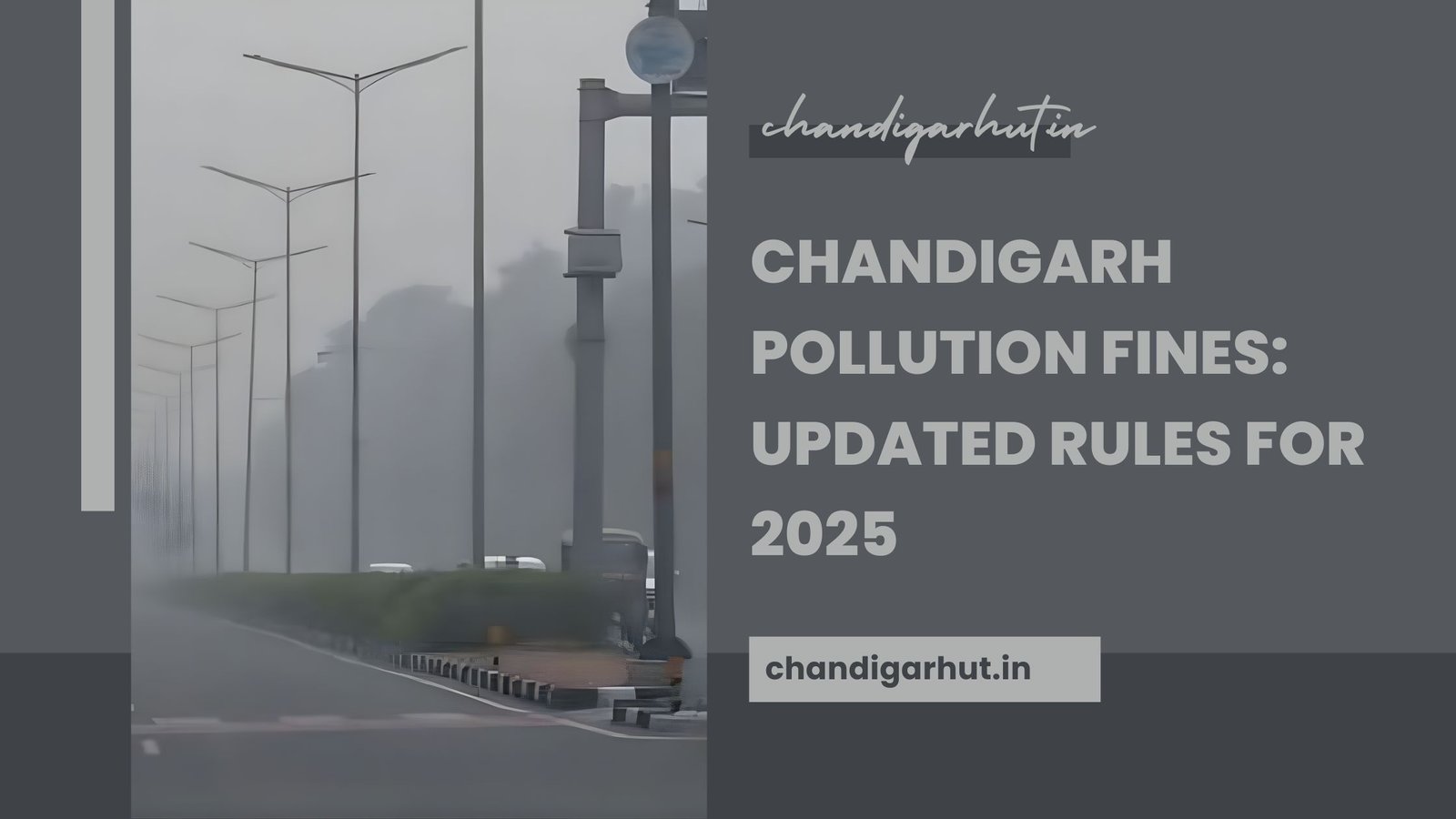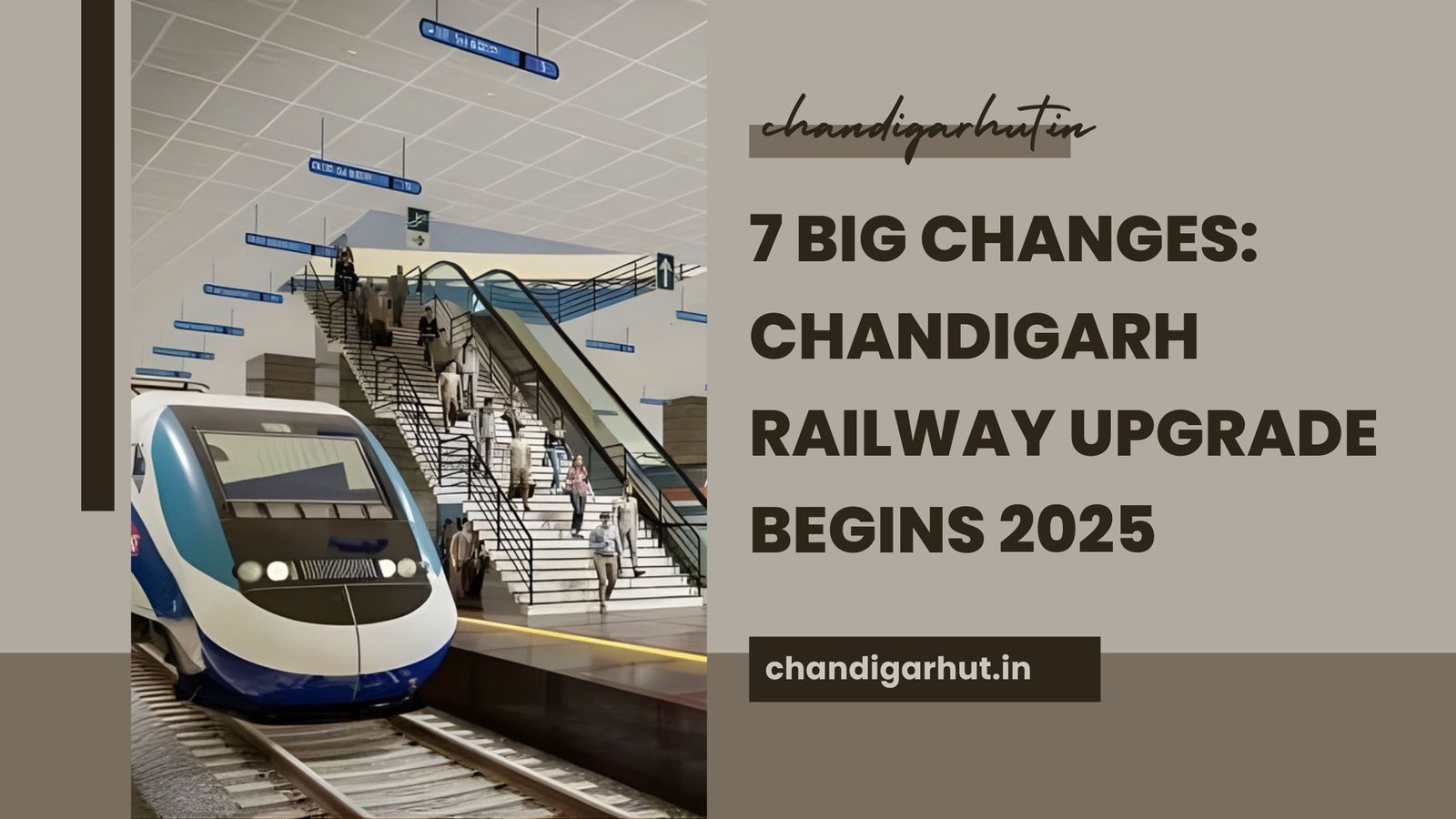The Chandigarh traffic reporting app is the latest initiative announced by authorities to let residents upload photo, video and audio evidence of traffic offences — from rash driving and signal jumping to wrong-side driving and illegal parking. This citizen-enabled solution aims to strengthen digital accountability and make enforcement more responsive.
In this long-form guide we’ll cover: what the Chandigarh traffic reporting app does, how it’s expected to work, what evidence will be acceptable, the technical and legal safeguards citizens should expect, how the app fits into Chandigarh’s existing digital policing ecosystem, likely benefits and risks, steps residents should take to use the app effectively, and a detailed FAQ.
Why the Chandigarh traffic reporting app matters
The Chandigarh traffic reporting app represents a shift from passive observation to active citizen participation in traffic law enforcement. Over the last few years Chandigarh residents have already been sending photos and videos of violations through social media and dedicated channels; the new app formalizes that process, making submissions standardized, traceable and — ideally — actionable. Past reporting by residents has already resulted in thousands of challans, so building an app is a logical modernization.
Key reasons the app matters:
- Citizen empowerment: Residents can submit first-hand evidence quickly.
- Digital accountability: Submissions create audit trails and timestamps.
- Faster enforcement: Structured reports can be triaged by traffic teams.
- Data-driven policing: Aggregated reports help identify hotspots and trends.
- Complement to automation: Works alongside AI cams and e-challan systems being rolled out across the city.
What the app will let you report (features & evidence types)
According to the announcement, the Chandigarh traffic reporting app will accept:
- Photos showing violations (illegal parking, vehicles on cycle tracks, vehicles on zebra crossings).
- Videos of moving violations (signal jumping, rash driving, wrong-side driving, dangerous lane changes).
- Audio clips (used rarely, but useful for documenting verbal abuse or confirming circumstances).
- Location tagging via GPS to pinpoint where the offence occurred.
- Time-stamping and metadata to preserve the authenticity of the submission.
This standardization is important: structured ingress (photo/video + time + GPS) makes it easier for traffic officers to validate reports and reduces the time needed for follow-ups.
How submissions are likely to be validated
A citizen-generated submission only becomes enforcement action after verification. The validation workflow for the Chandigarh traffic reporting app will likely include:
- Automated screening — checks file integrity, GPS/time metadata, and whether the content is clear and legible.
- Human moderation — traffic staff verify the act, confirm vehicle registration (if visible) and cross-check against CCTV/ANPR where available.
- Cross-referencing — match the evidence with automated camera captures or prior complaints for corroboration.
- Issue of challan or notice — if evidence is valid and the vehicle is identifiable, an e-challan or notice may be issued to the registered owner.
Success depends heavily on backend enforcement capacity — enough staff, clear SOPs, and integration with existing e-challan and ANPR systems.
Privacy, misuse, and legal safeguards to expect
Whenever citizens are invited to submit media, there are important privacy and misuse concerns. For the Chandigarh traffic reporting app, look for these safeguards:
- Clear terms of use explaining how data (photos, location, device metadata) will be stored, used and deleted.
- Limited retention windows for non-actionable media (e.g., delete after 90 days if not used).
- Consent notices if footage captures bystanders.
- Anti-harassment protections to prevent the app being weaponized for personal vendettas.
- Authentication and CAPTCHA to reduce bots and fake submissions.
- Chain-of-custody logging — so evidence is admissible if needed.
Citizens using the Chandigarh traffic reporting app should also be aware that submitting private audio or interior footage without consent could raise legal questions — so use common-sense restraint and follow all app instructions carefully.
How the app fits with Chandigarh’s existing digital traffic tools
Chandigarh has been steadily shifting to technology-led traffic management: AI-enabled cameras at junctions, e-challan systems, and earlier citizen-reporting efforts via social media and apps. The Chandigarh traffic reporting app is designed to plug into this ecosystem so that citizen submissions can be cross-verified with CCTV feeds and ANPR (Automatic Number Plate Recognition) where available.
Existing apps and services (like e-challan checkers and citizen complaint portals) show that Chandigarh already has the digital backbone to accept citizen inputs — the new app formalizes and centralizes this capability.
Expected user journey: step-by-step
Below is a likely user flow for anyone using the Chandigarh traffic reporting app:
- Download & register — sign up using mobile number and OTP, complete a brief profile.
- Record evidence — use the app’s camera or upload from gallery; ensure GPS is enabled.
- Tag violation type — choose from a menu (rash driving, signal jump, illegal parking, etc.).
- Add notes — optional short description (time, conditions, witnesses).
- Submit — the app attaches timestamp and GPS, submits to the backend queue.
- Acknowledgement — you receive a submission ID and estimated tracking status.
- Verification & action — traffic team triages; you may get updates (accepted/rejected/actioned).
- Follow-up — if the case results in a challan, you may receive an e-notice or be able to view the status.
Tip: Keep recordings focused on the violation and be mindful of personal safety while filming.
Practical tips for taking usable evidence
To increase the chance your report through the Chandigarh traffic reporting app leads to action, follow these practical tips:
- Capture the vehicle clearly — visible licence plate and distinguishing marks are crucial.
- Record the entire incident if possible — short clips that start before and end after the violation help context.
- Enable GPS — submissions with accurate location metadata are more trustworthy.
- Avoid dangerous positions — don’t step into traffic or obstruct the road to obtain a shot.
- Keep the camera steady — stabilization improves clarity.
- Note time & direction — include any contextual notes in the submission form.
- Don’t edit or crop before uploading — raw files maintain credibility.
Well-documented submissions save validation time and increase enforcement likelihood.
Who will act on reports — enforcement and responsibilities
The Chandigarh traffic reporting app will funnel verified reports to the Chandigarh Traffic Police and related enforcement units. Important roles include:
- Traffic control officers — review evidence and decide on penalty issuance.
- ANPR/CCTV teams — cross-check photographs against camera archives if needed.
- Legal/administration desk — prepare e-challans or notices to vehicle owners.
- Public grievance teams — handle appeals or disputes about wrongful challans.
Expect a standard operating procedure (SOP) from the traffic department outlining timelines: e.g., verification within X days and action within Y days. The effectiveness of the app hinges on clear SOPs and sufficient staffing.
How the app can improve road safety — measurable benefits
If implemented and used well, the Chandigarh traffic reporting app can deliver measurable benefits:
- Reduction in repeat offences — public reporting increases perceived risk of detection.
- Quicker removal of hazardous parking — faster responses to illegally parked vehicles that block lanes or footpaths.
- Data for planning — aggregated complaints identify accident-prone stretches for infrastructure fixes.
- Community engagement — citizens feel ownership of road safety initiatives.
Past local reporting efforts have already contributed to large numbers of challans, so scaling that via an official app can amplify impact.
Risks, challenges and how they can be mitigated
No tech solution is perfect. Here are expected challenges for the Chandigarh traffic reporting app and mitigation strategies:
1. False or malicious reports
- Mitigation: strong verification, penalty for misuse, human moderation.
2. Overload of submissions
- Mitigation: triage algorithms, prioritization rules (e.g., dangerous moving violations flagged higher than parking).
3. Privacy concerns
- Mitigation: clear retention policies, consent mechanisms.
4. Backend capacity constraints
- Mitigation: dedicate resources, set realistic SLAs, integrate automation where safe.
5. Inequity in enforcement (reports from affluent areas prioritized)
- Mitigation: transparent dashboards and periodic audits.
Addressing these early will determine whether the Chandigarh traffic reporting app becomes a trust-building tool or a source of frustration.
How the app compares to similar initiatives elsewhere
Cities across India have piloted citizen-reporting and traffic apps with varying success. For example, some cities pair citizen reports with automated camera evidence to reduce disputes. The Chandigarh traffic reporting app benefits from Chandigarh’s compact geography and growing network of CCTV/AI cams — making cross-verification easier than in sprawling metros.
Lessons from other cities:
- Clear escalation protocols speed up action.
- User feedback loops (status updates) increase adoption.
- Integration with e-challan systems is essential for actual enforcement.
- Public awareness campaigns drive citizen use and educate on acceptable evidence.
Adopting these lessons will help Chandigarh avoid common pitfalls.
Accessibility and user adoption — making the app widely used
For the Chandigarh traffic reporting app to succeed it needs broad adoption. Authorities can promote adoption by:
- Launching multilingual interfaces (English, Hindi, Punjabi).
- Making the app lightweight so older phones can run it.
- Providing a web fallback.
- Running targeted awareness campaigns (TV, radio, social media, locality-level drives).
- Gamifying participation (badges for verified contributors) while discouraging misuse.
Adoption is as much an outreach challenge as a technical one.
Data transparency and public dashboards
Transparency builds trust. The city could publish anonymized dashboards showing:
- Number of submissions received and processed.
- Types of violations most reported.
- Enforcement actions taken (challans issued).
- Hotspot maps for repeat violations.
A transparent approach would let citizens see the real impact of the Chandigarh traffic reporting app and hold enforcement accountable.
What citizens should NOT do when recording evidence
To keep the initiative lawful and effective, avoid:
- Filming inside private property without consent.
- Provoking or confronting offenders.
- Sharing obscene or harassing content.
- Altering timestamps or editing clips before uploading.
Stick to objective evidence-gathering — capture the behaviour, not private conversations or personal attacks.
How the app could evolve: possible future features
Looking ahead, the Chandigarh traffic reporting app could include:
- AI pre-screening that flags high-risk incidents automatically.
- Integration with 112 emergency services to dispatch help for serious incidents.
- In-app payment of fines linked to e-challan IDs.
- Neighborhood moderation panels where local NHOs vet repeated offenders (with safeguards).
- APIs for researchers to study traffic behaviour while protecting privacy.
These features would increase utility but require careful policy design.
Sample scenarios — when to use the app
- Signal jump at a busy junction: Capture a 10–15 second clip showing the vehicle crossing on red and upload with GPS.
- Illegal parking blocking a footpath: Photo from two angles + short note.
- Dangerous overtaking causing near-miss: Video clip with time and GPS.
- Commercial vehicle frequently stopping in a no-parking zone: Multiple submissions build a pattern.
In all cases, include as much objective evidence as possible and avoid commentary-laden or edited clips.
Role of community groups and resident welfare associations (RWAs)
RWAs and NGOs can amplify the Chandigarh traffic reporting app by:
- Coordinating neighborhood drives to educate citizens on safe use.
- Organizing evidence-collection drives for repeat offenders (while respecting legal boundaries).
- Acting as intermediaries to work with traffic police on hotspot remediation.
Partnerships can help distribute enforcement workload while promoting civic responsibility.
Costs and resource questions — who pays?
The app’s launch and ongoing operations will require funding for development, hosting, moderation teams, and integration with existing systems. Funding options include:
- UT budget allocations to traffic or IT departments.
- Centralized grants or Smart City funds.
- Public-private partnerships for app development (with strict data governance clauses).
Transparent disclosure of costs and procurement details will reduce skepticism.
Metrics to evaluate success
To quantify the impact of the Chandigarh traffic reporting app, monitor:
- Number of actionable submissions per month.
- Time-to-verification (hours/days).
- Percentage of submissions resulting in enforcement action.
- Reduction in violations at reported hotspots.
- Citizen satisfaction scores.
Publicly reporting these metrics will show whether the app is delivering promised improvements.
Sample communication from the police (what you should expect)
After submission, a typical automated message might read:
“Thank you for your submission (ID: 12345). Our traffic team will review your evidence within X working days. You will receive an update when action is taken.”
If the case proceeds, you might receive:
“Action taken: challan issued (e-challan No. 98765) to vehicle ABC-1234 for signal jump on [date].”
Expect clear, time-bound updates — this builds confidence in the system.
Challenges to fairness and equitable enforcement
Any citizen-reporting system risks unequal enforcement. To minimize bias:
- Apply uniform verification rules across all areas.
- Auditors should periodically review a random sample of submissions for fairness.
- Make appeals easy and transparent for those who believe they were wrongfully challaned.
A fair system is more likely to be respected and used constructively.
What to do if your submission is rejected
Not all submissions will lead to action. If your Chandigarh traffic reporting app submission is rejected:
- Check the rejection reason in the app (blurry image, no plate, insufficient context).
- Resubmit with clearer evidence if available.
- If you believe the rejection was wrong, use the in-app grievance redressal or escalate to the public complaint desk.
- Keep the submission ID for reference.
Constructive follow-up increases the chances of action.
Integrations with other city services
The app can synergize with:
- Municipal complaint portals (for illegally parked commercial vehicles affecting waste collection).
- Road maintenance departments (if violations point to infrastructural problems).
- Public transport agencies (if repeat violations affect bus lanes).
Cross-departmental workflows increase impact beyond just issuing fines.
Citizen code of conduct for app users
To maintain trust, citizens who use the Chandigarh traffic reporting app should follow a simple code:
- Prioritize safety — don’t endanger yourself to collect evidence.
- Be objective — record behaviour, avoid comments.
- Respect privacy — avoid capturing private interiors or children unnecessarily.
- Use responsibly — don’t file frivolous or malicious complaints.
- Participate constructively — share hotspot information with RWAs and traffic police.
A community-minded approach will make the app work for everyone.
FAQs
Q1: What kinds of violations can I report through the Chandigarh traffic reporting app?
A1: You can report moving violations (rash driving, signal jumping, wrong-side driving), parking violations (illegal parking, blocking footpaths), helmet/non-seatbelt violations, and other public-safety traffic issues. Provide photo/video/audio evidence and location metadata.
Q2: Will my identity be revealed to the accused driver?
A2: Official protocols generally anonymize the complainant during initial verification, but exact practices depend on app design. Look for privacy statements in the app and retain your submission ID for follow-ups.
Q3: Can I be penalised for submitting false evidence?
A3: Yes — submitting fabricated or malicious evidence can lead to legal action. Use the app responsibly and provide only factual, unedited evidence.
Q4: How long will it take for the traffic police to act on my submission?
A4: Timelines will vary. The app should provide estimated verification and action windows (e.g., review within 3–7 working days). Enforcement speed depends on backend capacity and corroborating CCTV/ANPR.
Q5: Will the app allow me to track the status of my complaint?
Q5: Will the app allow me to track the status of my complaint?
A5: The announcement indicates users will receive acknowledgements and tracking IDs; expect status updates (accepted/rejected/actioned) within the app.
Conclusion
The Chandigarh traffic reporting app is a promising step toward a safer, more accountable city. When citizens use the app responsibly and the administration commits resources to verify and act on submissions, the combined effect can reduce violations and improve road safety. However, success depends on thoughtful implementation — clear SOPs, privacy protections, backend capacity, and transparent metrics.
If you’re a Chandigarh resident interested in staying updated and learning how to use the app effectively, bookmark our coverage and guides. For continued, practical updates and step-by-step tutorials on using the Chandigarh traffic reporting app, visit Chandigarhut.in — we’ll post guides, tips and sample templates you can use for submitting clear, actionable evidence.














